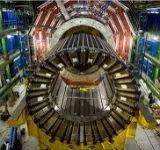

Looking back to look forward: If you’re building your team agenda for 2013, perhaps ask yourself what you can learn from the best teams of 2012.
Science Superteam 2012
CERN Large Hadron Collider
“Peter Higgs, after whom the Higgs boson particle is named, wiped a tear from his eye as the teams finished their presentations in the Cern auditorium.” Quote from the BBC
The discovery of a particle believed to be the Higgs boson came 48 years after Higgs had first conceived of it in 1964. The discovery at the Large Hadron Collider (LHC) particle accelerator near Geneva has been hailed as an ‘intellectual, technological and organisational triumph.’
The team who finally isolated the Higgs boson, also known as the ‘God particle’, have found the particle that is purported to give other fundamental particles mass.
In order to find the Higgs boson, it took the efforts of thousands of scientists and engineers from diverse international and multilingual backgrounds, as well as the huge task of actually constructing of the LHC.
In total, it took 10,000 scientists a total of 14 years to assemble the ring-shaped tunnel below the Swiss and French border.
One hundred metres underground, the collider has an incredible circumference of 27 kilometres.
The discovery of the particle was voted the top scientific breakthrough in Science magazine. Cern also won the $3 million Milner Prize for scientific achievement.
The Milner reward has been praised for reflecting the team aspect of scientific breakthrough. While the Nobel limit is three people, the Milner award gives attention to incredible organisational triumphs.
Some scientists have said that the Nobel Prize is “out of touch with the large-scale collaborations that are a feature of much modern research.” Quote from Mail & Guardian
Team Talk
So what can be learnt from a half-century quest for a theoretical “God particle”?
What is really striking about this scientific discovery is the amount of time and resources that went into finding something that was not certain to be found.
One of the main principles of shaping and environment of success for any team is to make the team as small as the mission allows.
As teams grow so too does the challenge of co-ordinating them, getting agreement and building cohesion. There was an immediate risk factor borne out of the size of Cern’s scientific operation, which could easily have been the source of its own downfall.
However, united by a strong common cause - the quest for the Higgs boson - thousands of scientists were able to come together to build this colossal underground structure.
Investing in a team of thousands and allowing for years of construction, the Cern project was steadfast in shaping the environment for success, even though returns would not be seen until the very end.
So while smaller teams often make it easier to forge common purpose, build bonds between members and choreograph collaboration, it is important to recognise when a large and long-term organisational effort is necessary.
To shape the environment for success for your team, understand the time, information, resources and finance available. Prioritize, ruthlessly, the resources vital to your team’s progress. Shed any excess baggage, but make the team as big as it has to be.
If in doubt, investing in the right people and their resourcefulness is the most effective way to secure the assets needed to succeed.
Read more about shaping the environment for success to start creating your team agenda for action today.
Written by Sam Ramsden
See Khoi Tu speak at the RSA or follow his story on Twitter @buildsuperteams
A BETTER TEAM




